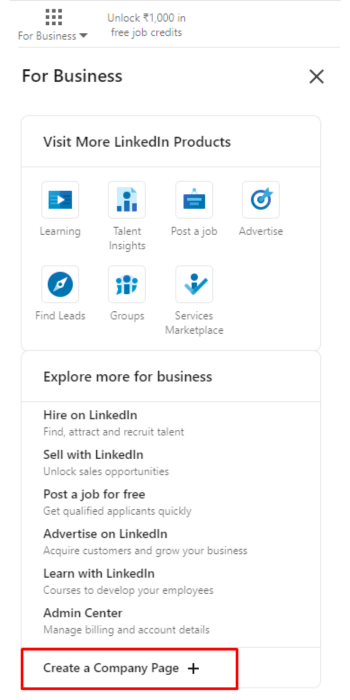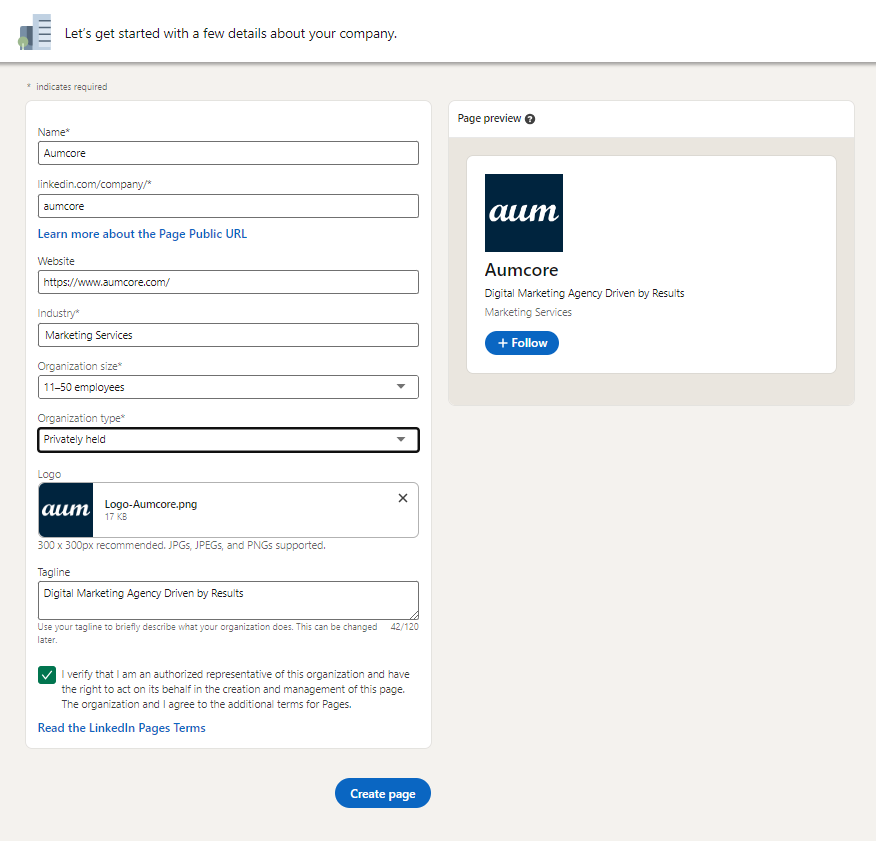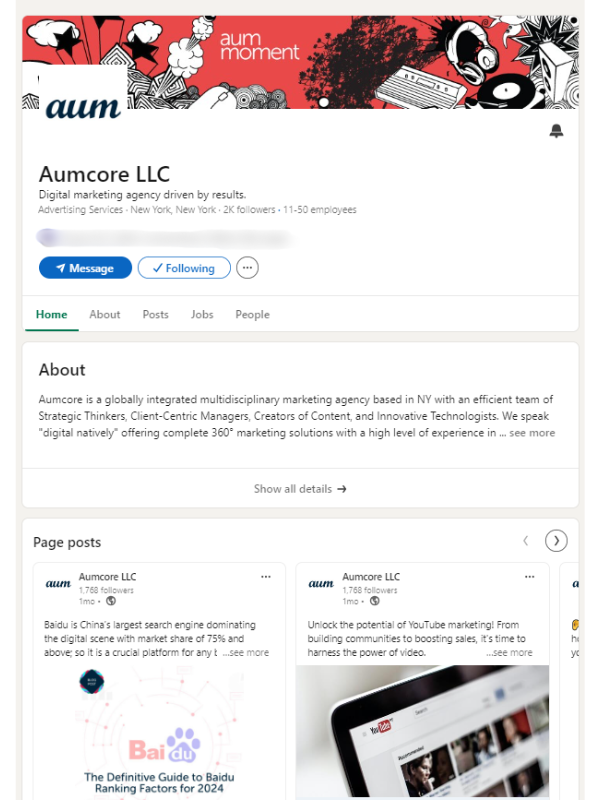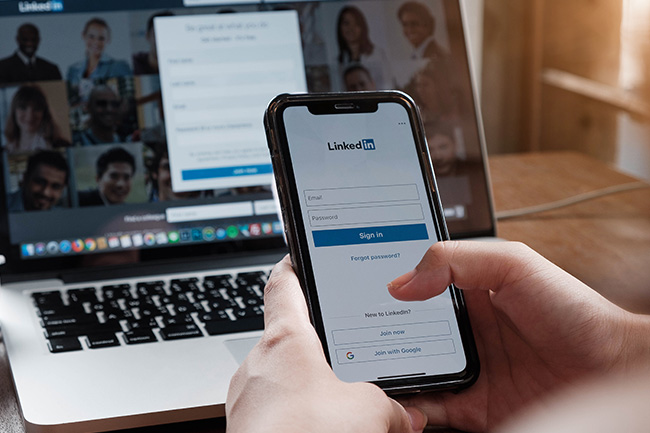LinkedIn is no longer just a basic platform for professional connections, as it has now evolved into an essential part of modern business marketing strategies. Given its colossal user base that spans over a billion worldwide, LinkedIn offers unparalleled opportunities for companies to create links, engage with customers and expand their sphere of influence. Partnering with a company offering social media marketing services can help to simplify this process.
Given today’s digital terrain, tapping into the potential of LinkedIn isn’t just advantageous—it’s imperative for keeping up with competition and relevance. In this comprehensive manual, we’ll look into how you can efficiently use LinkedIn as your go-to tool for promoting your business in 2024.
How To Use LinkedIn Marketing for Businesses
In current business practices, LinkedIn for business marketing has become a crucial component that plays an integral role in any comprehensive digital marketing plan. And with over 58.4 million registered businesses, it’s easy to see how impactful it can be.
It is no longer solely considered as a professional networking platform; instead, it has evolved into a dynamic arena where businesses can exhibit their proficiency and establish brand credibility while also fostering meaningful connections.
LinkedIn Business Manager has extended its offerings to provide companies with diverse engagement and lead generation channels, including Company Pages, LinkedIn Ads, and LinkedIn Groups. With Company Pages businesses can create a strong online presence through updates about their company as well showcase products or services on a global scale. Through the targeted advertising solutions of LinkedIn ads, businesses have greater accuracy in reaching demographics based upon job titles within various industries.
Additionally, by means of fostering community engagement via groups created specifically for professionals alike; insights are shared leading to meaningful discussions that shape opinions within these particular niches tailored towards business growth activities such as networking opportunities provided alongside other benefits inclusive thereof .
Creating a LinkedIn Business Profile
To create your business profile, simply follow these steps:
- Sign Up or Log In: Go to the LinkedIn website (www.linkedin.com) and sign in to your personal LinkedIn account. If you don’t have one, you’ll need to create a personal LinkedIn profile first.
- Create a Company Page
- Once logged in, click on the “Work” icon in the top right corner of the homepage.
- Select “Create a Company Page” from the dropdown menu.

- Choose Company/Page Type: You’ll be asked to choose the size/type of your Business Page. Select from the options provided.

- Enter Company Details: Fill in the required information about your company, including:
- Company name
- Linked Page URL for your Company
- Company website URL
- Industry
- Company type (e.g., privately held, public, etc.)
- Company Logo
- Company size
- Company Tagline

- Upload a Logo and Cover Image: Add your company’s logo and a cover image to make your profile visually appealing. Make sure the images are clear and professional.
- Provide Additional Information: Fill in any additional information you want to share about your company, such as:
- Location(s)
- Year founded
- Specialties
- Company mission and values
- Add Showcase Pages (Optional): If you want to highlight specific products, services, or initiatives, you can create showcase pages. Click on “Create a Showcase Page” and fill in the details.
- Review and Publish
- Double-check all the information you’ve entered to make sure it’s accurate and complete.
- Click on the “Create page” or “Publish” button to make your LinkedIn business profile live.
- Optimize Your Profile
- Regularly update your profile with relevant content, such as company news, blog posts, and job openings.
- Encourage employees to connect their personal LinkedIn profiles to your company page.

- Engage with Your Audience
- Engage with your followers by sharing valuable content, responding to comments, and participating in relevant discussions.
- Use LinkedIn analytics to track the performance of your posts and make informed decisions about your content strategy.
How to Optimize Your LinkedIn Company Page
Establishing a robust brand presence on LinkedIn requires the creation and optimization of your company page. This crucial step lays the groundwork for making an impactful debut and attracting a significant following.
To achieve this, consider following these important steps:
- Use Keywords: Optimize your profile sections with keywords related to your organization – including those on non-main pages – to enhance search visibility.
- Share Compelling Content: Regularly share significant and captivating content, such as articles, videos or current events related to your industry. This not only showcases your professionalism but also sustains the interest of your followers.
- Showcase Pages: You can make use of Showcase Pages to highlight specific services or products individually, especially if your company has several differentiated offerings.
- Utilize LinkedIn Analytics: Take advantage of LinkedIn Analytics to assess the effectiveness of your profile and posts. By doing so, you can gain valuable insights into what resonates with your audience and adapt your tactics accordingly. This tip is likely to assist in optimizing performance for better results.
- Consistency: To stay at the forefront, maintain a high level of messaging frequency and consistency on LinkedIn.
Making The Most of Your Business Profile
When setting up your profile, there are a few things you can do to optimize it so that it stands out from the crowd. Here are a few simple suggestions:
- Complete All Sections: Ensure all sections of your profile are filled out completely and accurately. This includes the company description, website URL, industry, location, and other relevant details.
- Professional Visuals: Use high-quality images for your logo and cover photo to make your profile visually appealing and professional.
- Compelling Company Description: Write a concise and compelling company description that clearly explains what your company does, its mission, and values. Highlight your unique selling points.
- Engaging Content: Share valuable and relevant content regularly, such as company updates, industry news, blog posts, and videos. This helps to keep your audience engaged and positions your company as an industry thought leader.
- Encourage Employee Engagement: Encourage employees to connect their personal LinkedIn profiles to your company page. Their connections can help increase the visibility of your content and attract more followers.
- Engage with Followers: Respond to comments and messages promptly, and actively engage with your followers by participating in relevant discussions. This helps to build relationships and foster a sense of community around your brand.
- Promote Your LinkedIn Profile: Promote your LinkedIn profile on other marketing channels, such as your company website, email signature, and other social media platforms, to increase visibility and attract more followers.
- Stay Updated: Keep your profile updated with the latest information about your company, products, and services. Regularly review and refresh your content to ensure it remains relevant and informative.
Ways to Utilize LinkedIn Marketing Your Business
To enhance your business’s visibility on LinkedIn, make use of its numerous features and tools. Follow these LinkedIn for business marketing strategies:
1. Show Your Expertise
- Use LinkedIn to share long posts where you can showcase your industry knowledge and insights. This helps you establish yourself as a thought leader.
- To start, click on “Start a post” or “Write article” on your LinkedIn homepage.
- You can post from your personal profile or your Company Page. If you want to grow your business, use your Company Page.
- If someone on your team posts valuable content, share it on your Company Page to reach a wider audience.
2. Get More Leads
- Many LinkedIn users make business decisions, making it a great platform to find potential customers.
- LinkedIn can help you find motivated leads, especially if you’re in freelancing or sales.
3. LinkedIn Sales Navigator
- Advanced search filters will help you pinpoint prospects aligning with your ideal customer profile.
- Initiate meaningful interactions with leads using relevant content to foster relationships and boost conversions.
4. Hire the Right People
- Millions of people look for jobs on LinkedIn every week.
- You can post job listings for free, and they’ll appear on your Company Page.
- Paying to promote your job listings can attract more applications.
- LinkedIn offers special accounts for recruiters and smaller businesses to help with hiring.
5. Get Employees Involved
- Use LinkedIn’s “My Company Tab” to share company news and posts with your employees.
- Encourage employees to interact with company content and share it with their networks, increasing your brand’s reach.
6. Try Different Ads
- LinkedIn offers various ad formats to help you reach your target audience.
- Some ad formats include text ads, sponsored posts, messaging ads, dynamic ads, job listings, and photo carousel ads.
- Experiment with different ad formats to see what works best for you. Use tools to track and analyze your ad performance across different platforms.
Tips to Create an Effective LinkedIn Marketing Strategy
To develop an effective LinkedIn marketing strategy, it is important to plan and execute meticulously. Here are a few suggestions that can help you in crafting a successful plan:
- Set Clear Objectives: Determine your objectives for using LinkedIn. For example, you can use social media to expand your brand, directing online traffic towards your website, or generating business opportunities.
- Know Your Audience: To create content that resonates with your readers, it’s important to know who they are. Find out their age, hobbies and other important factors so you can make a connection. Utilizing LinkedIn Sales Navigator could be the key to success in this area.
- Monitor and Analyze Performance: In order to gauge the efficiency of your content and advertisements, establish a routine of regularly monitoring LinkedIn analytics. By doing so, you can make necessary adjustments to improve future endeavors for greater impact.
Future Trends in LinkedIn Marketing
Looking ahead, several trends are shaping the future of LinkedIn marketing:
- Video Content: LinkedIn offers a fresh avenue for businesses to communicate with their clients by using video content.
- AI-driven Personalization: Utilizing AI-driven personalization technology enables companies to tailor content for their audience, leading to increased engagement and conversion rates.
- AI Tools For Social Media Content Creation: The use of artificial intelligence to produce digital content will increase as brands seek greater efficiency in their operations.
- Virtual Events: As virtual events continue to expand, LinkedIn should consider offering extra pages for attendees to network and converse. This could be a valuable resource for businesses seeking fresh avenues of communication with their key clientele.
Leveraging the Power of LinkedIn for Your Business in 2024
LinkedIn remains a powerful tool that empowers businesses to connect with specialists, establish their brand credibility and foster growth. Through optimizing their Company Page, developing captivating content or leveraging LinkedIn’s advertising & networking capabilities; enterprises can successfully promote themselves to an international pool of professionals. Remaining updated on the latest trends and optimal approaches will be imperative in boosting your company’s online reputation as this platform undergoes further evolution in subsequent years.




